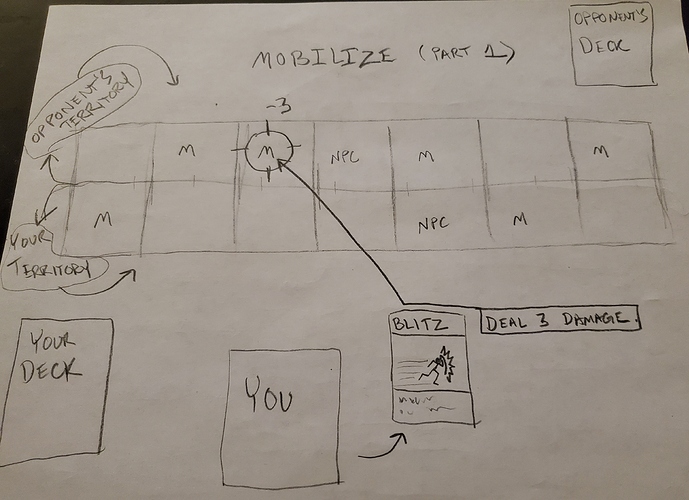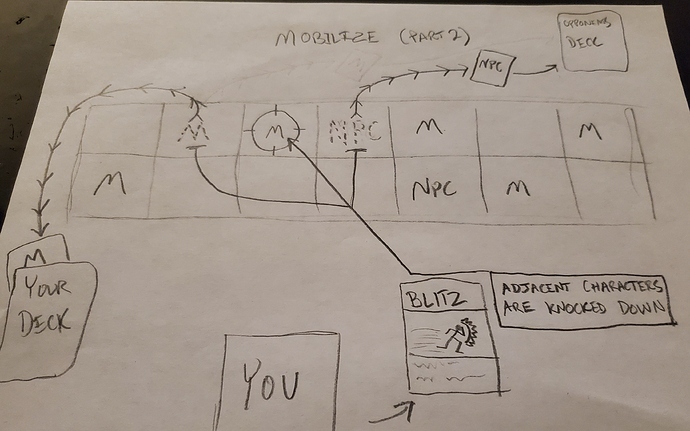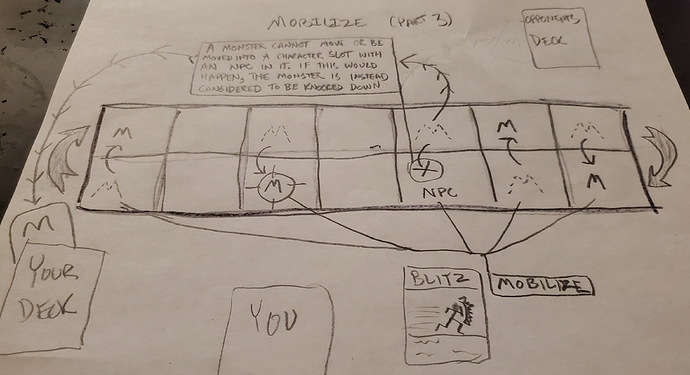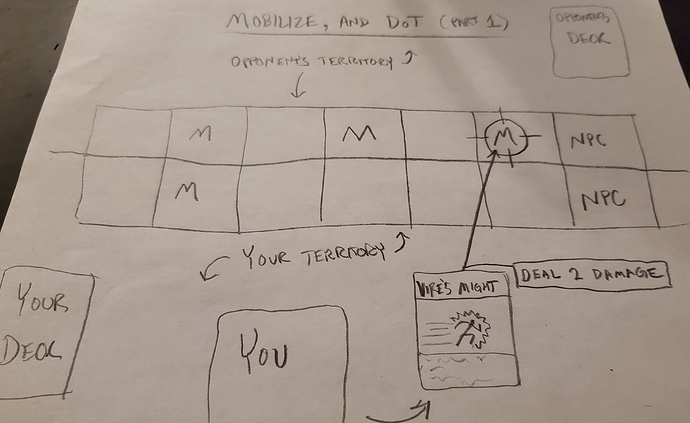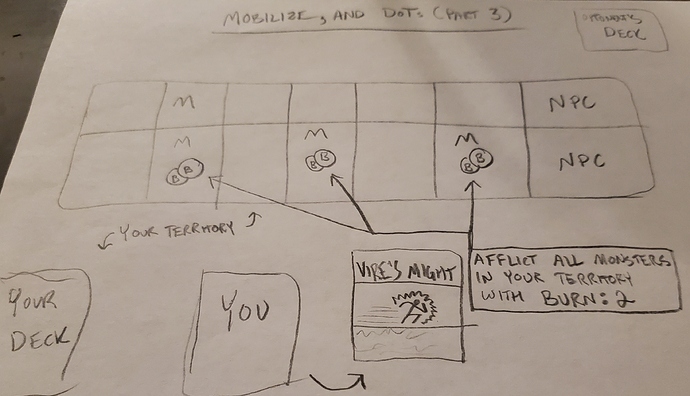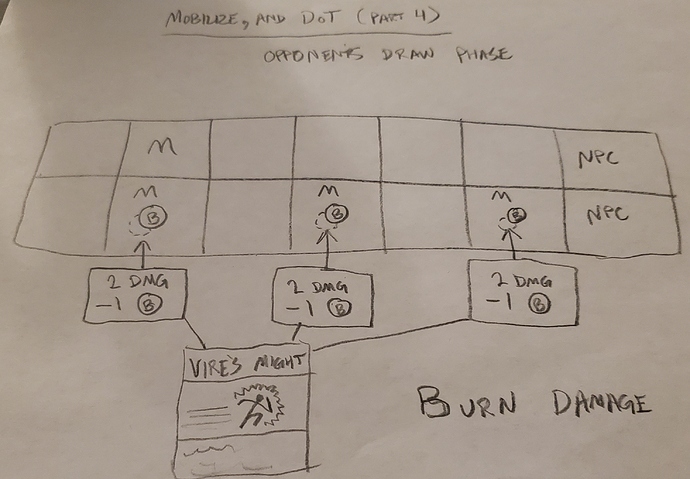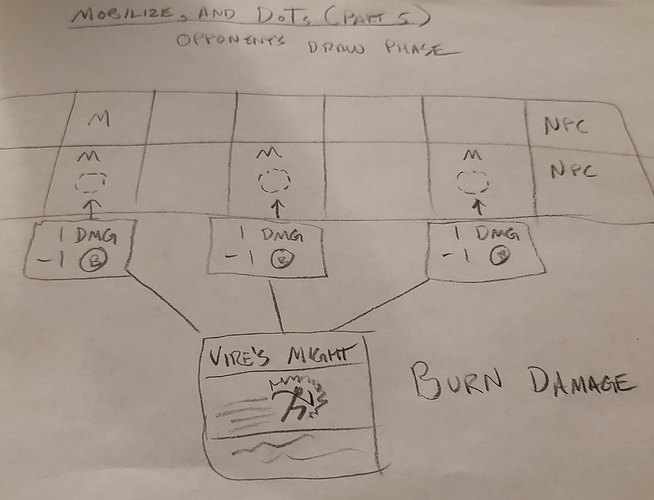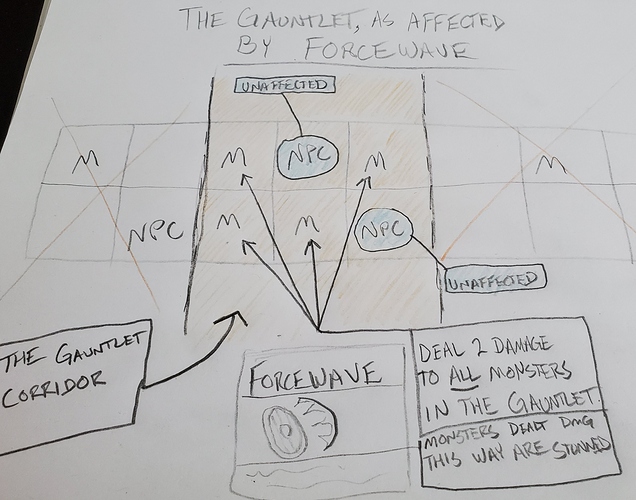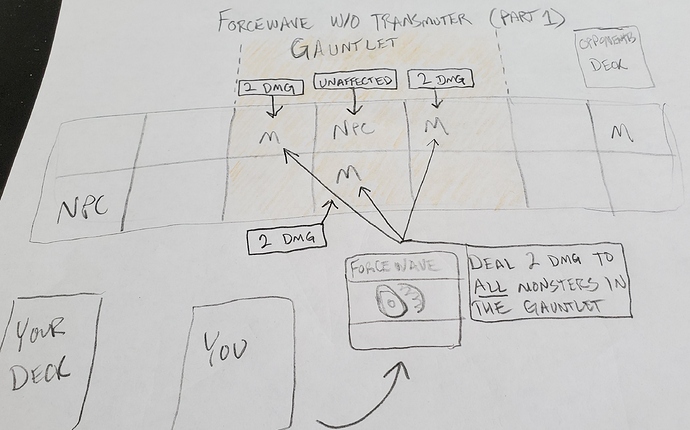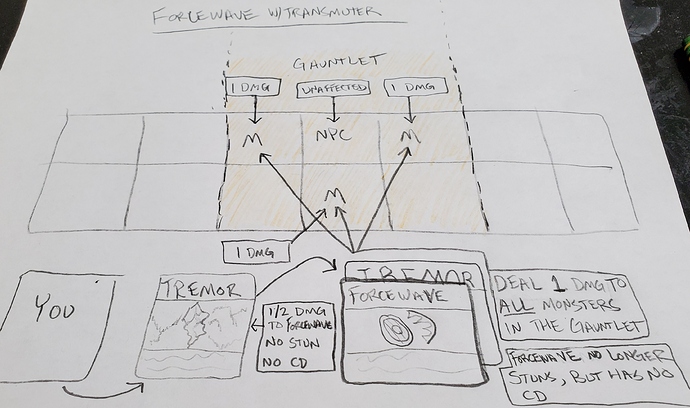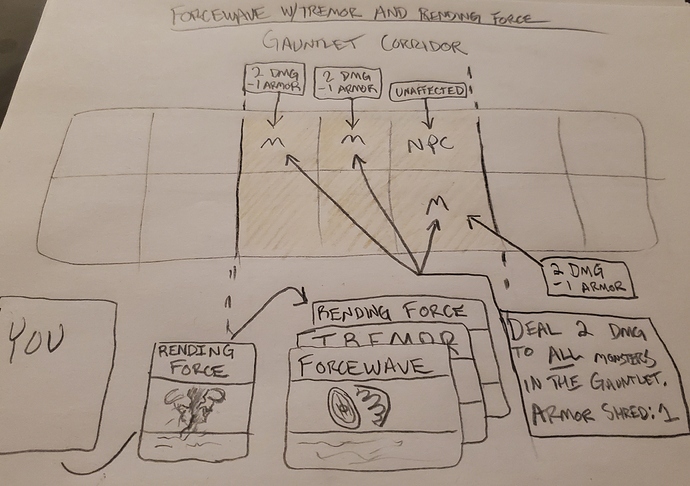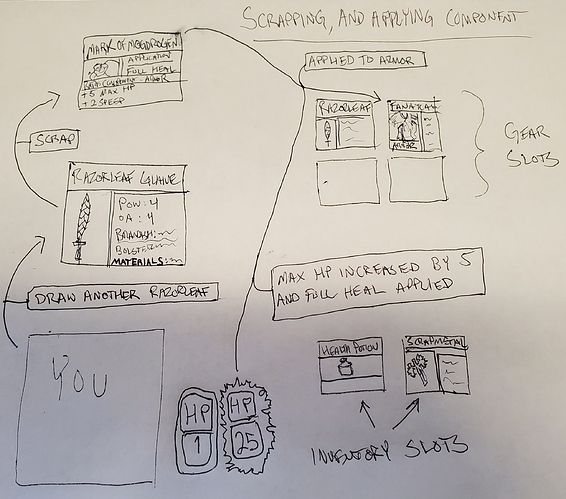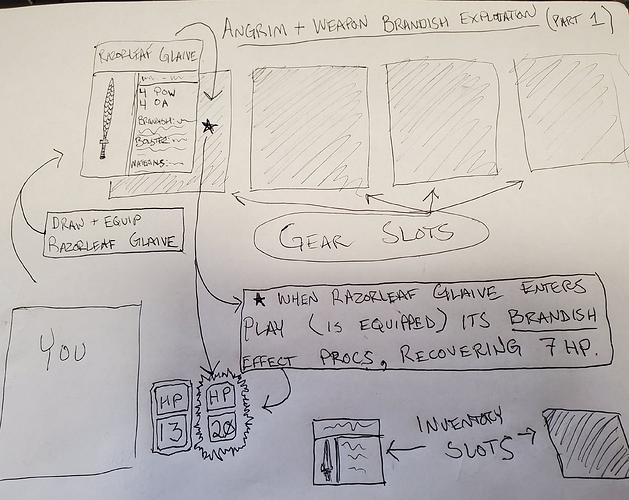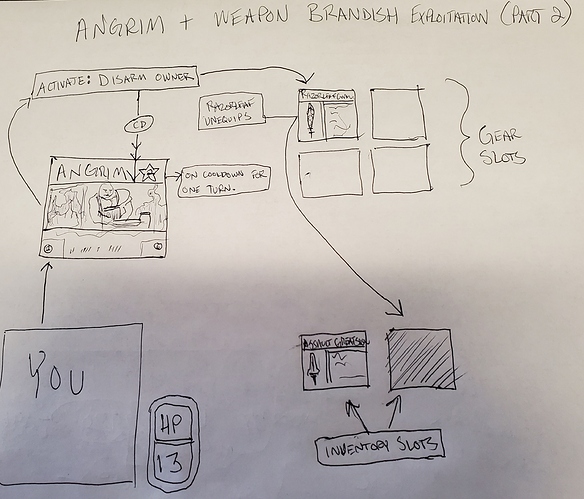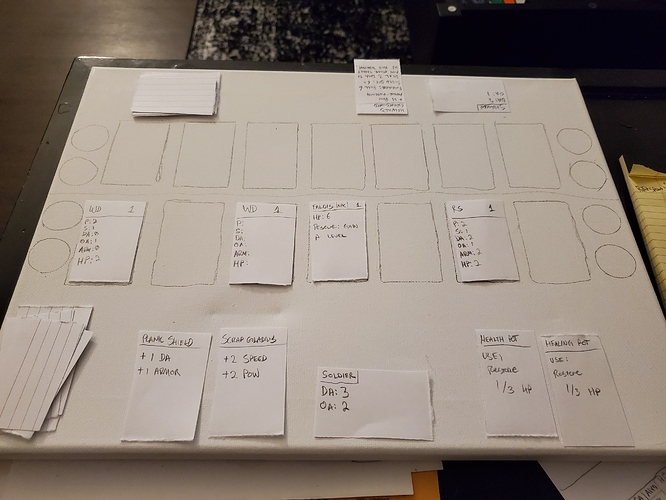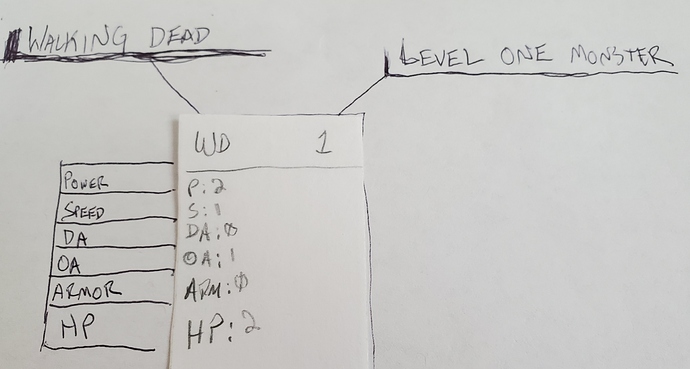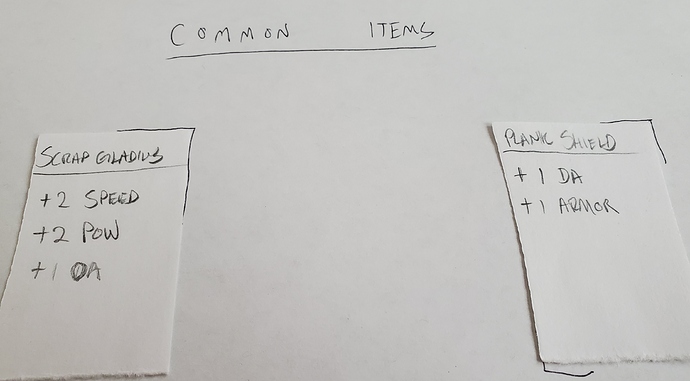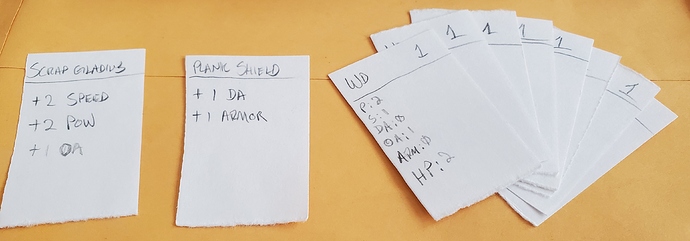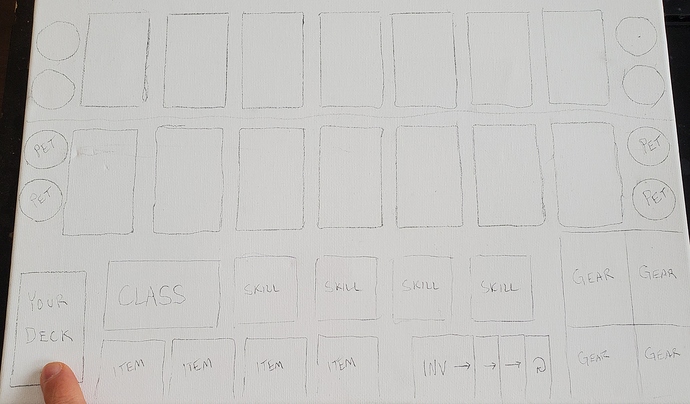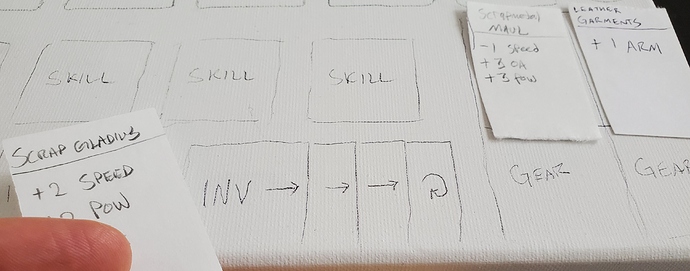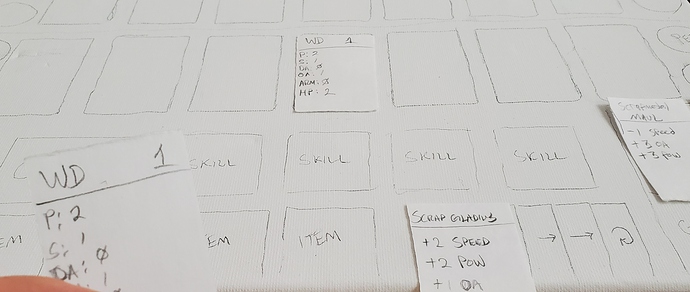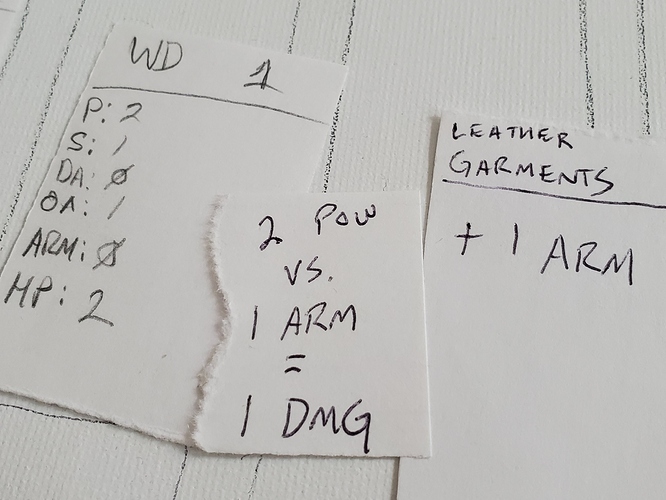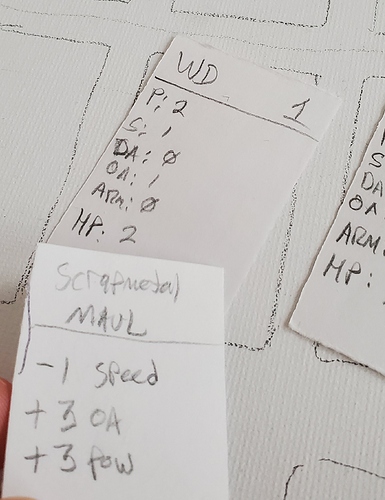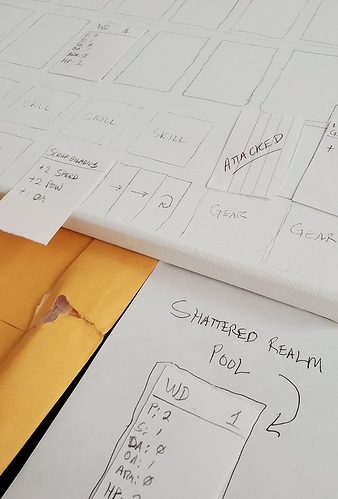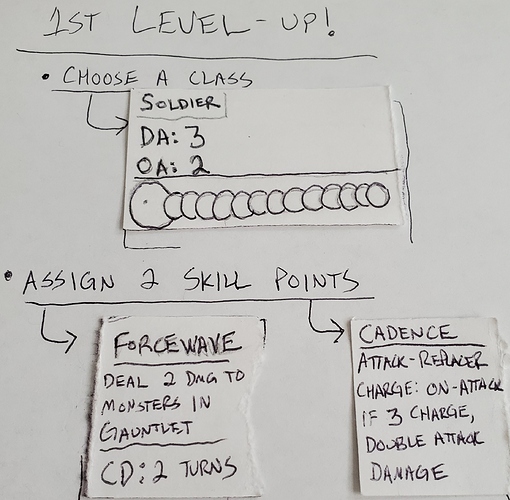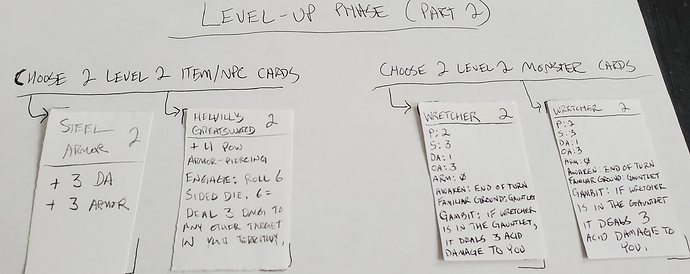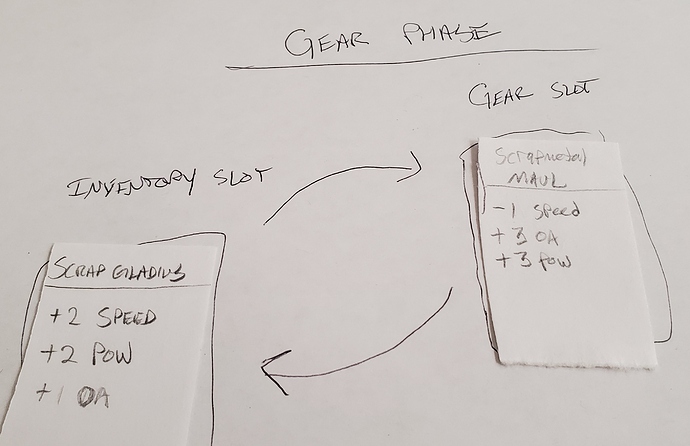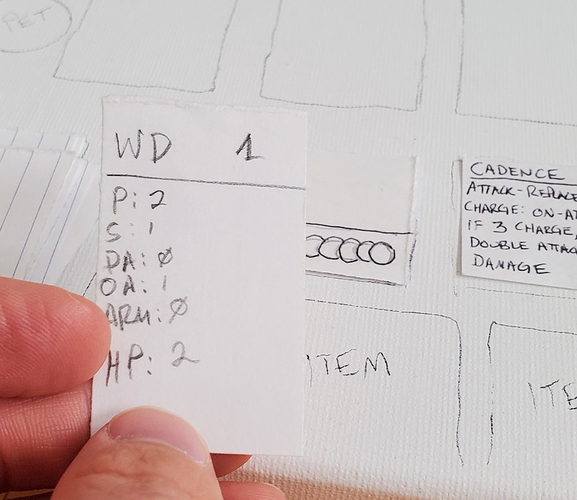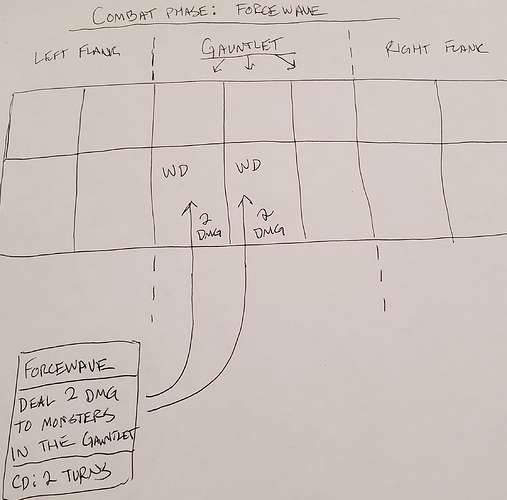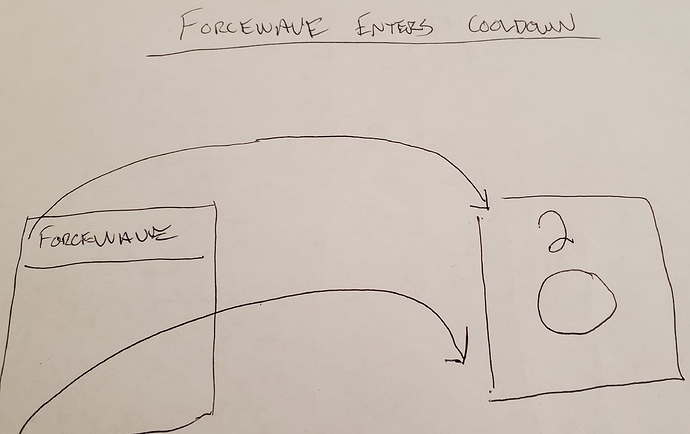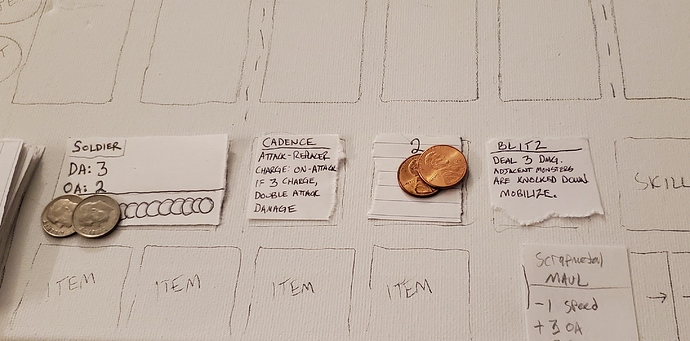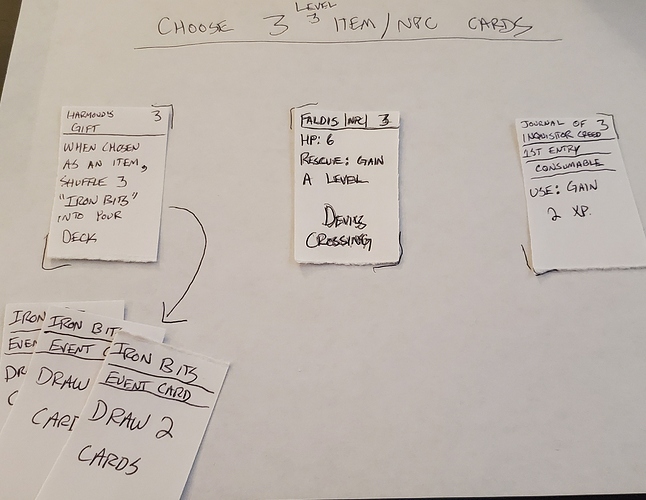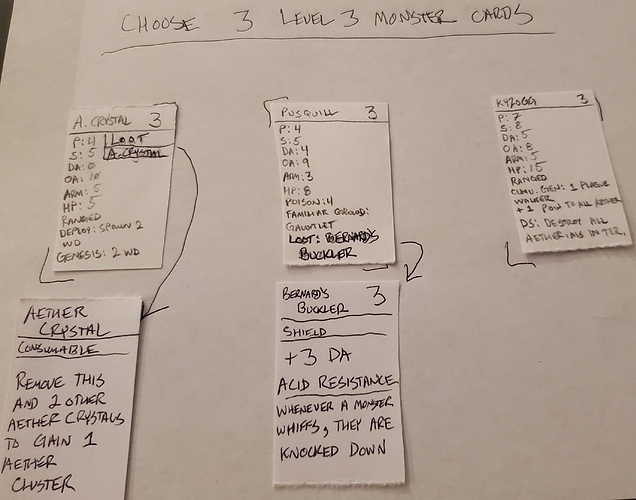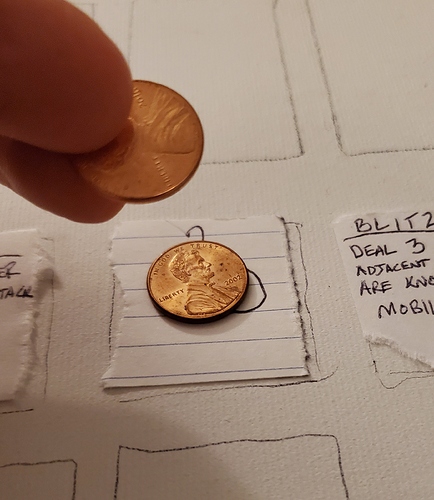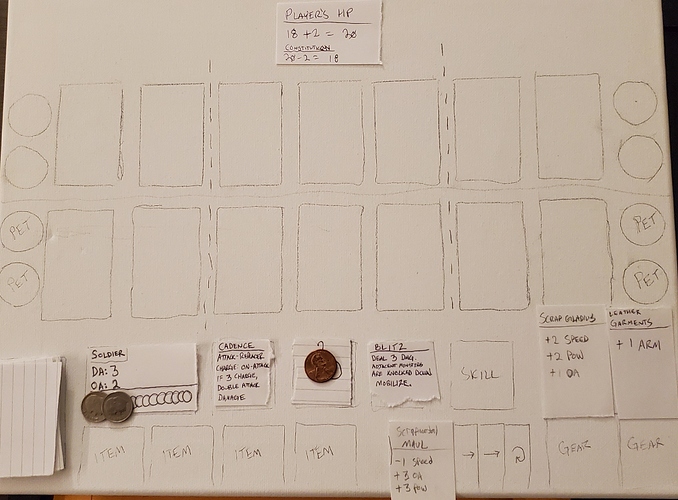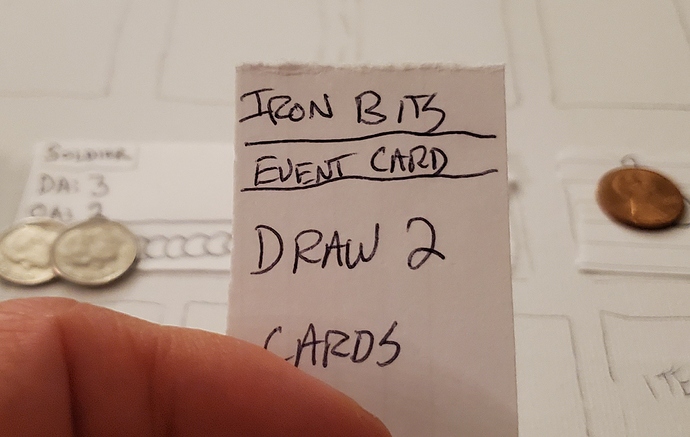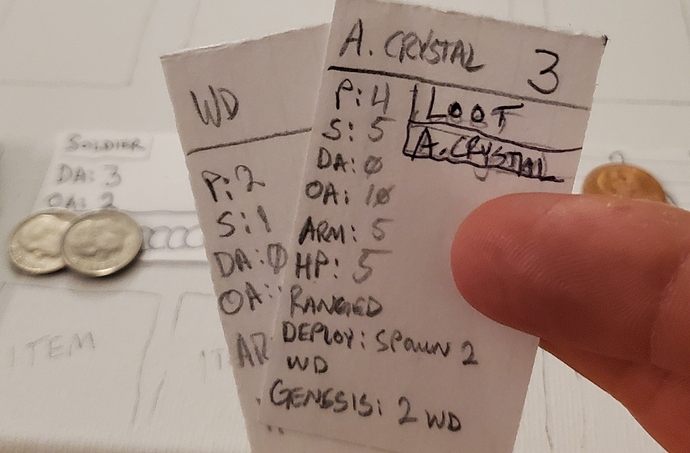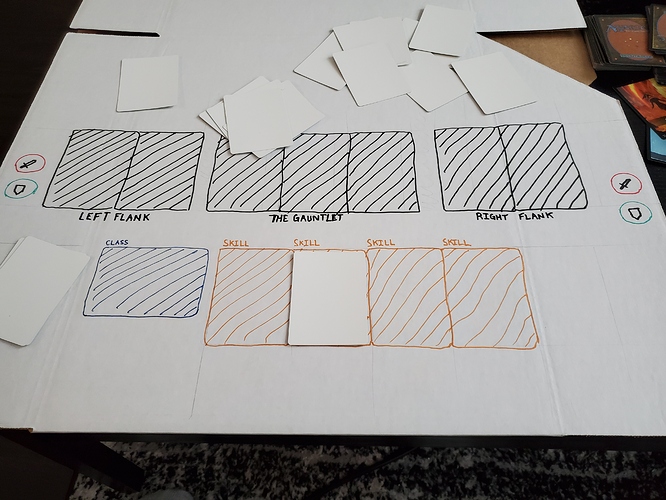HOW DOES SINGLE PLAYER WORK?
The basic mechanics of this game function the same in Single Player as they do in 1v1. There are some minor differences to how certain mechanics operate. One example of this would be Territory, and the effect it has on your basic attack.
With no opponent, both rows of game slots are technically considered your Territory. This being the case, the first row (closest) is considered your “Immediate Territory” in this mode. Monster cards are placed in your Immediate Territory when drawn, unless there are no open slots there. In that case, they are placed in the “Rear Territory”. You are only able to use your basic attack on Monsters in your Immediate Territory. Also, Monsters in the Rear Territory cant attack you if you have any NPCs in your Immediate Territory, and will instead automatically focus their attacks and abilities on said NPCs. This is a big difference from 1v1, where Monsters cant target NPCs with attacks and abilities.
Outside of this, the other main difference between 1v1 and Single Player is the win conditions. In Single Player (and co-op), players will choose a campaign at game start. Campaigns follow specific game paths, incorporating specific Monster, NPC, and Gear cards pulled directly from the game content relative to them, rather than utilizing any monster, NPC, and Gear cards in the players collection as can be done in 1v1 mode.
For each campaign there is a Boss. Players must survive long enough to level up and add the Boss Monster cards to their decks, then defeat them in order to win. Below are the default campaigns, their Bosses, and respective “zones”;
The Ch’thonic Menace: Defeat Loghorrean, the Voice of Ch’thon
-Devil’s Crossing
-Wightmire
-Burrwitch Outskirts
-Burrwitch Village
-East Marsh
-Warden’s Laboratory
-Old Arkovia
-The Four Hills
-Twin Falls
-Broken Hills
-Smuggler’s Pass
-Deadman’s Gulch
-Pine Barrens
-Homestead
-Rotting Croplands
-Blood Grove
-Darkvale Gate
-Asterkarn Valley
-Fort Ikon
-Plains of Strife
-The Necropolis
-Tomb of the Watcher
The Liberation of Malmouth: Theodin Marcell, Master of Flesh
-Gloomwald
-Coven’s Refuge
-Ugdenbog
-Barrowholm
-Malmouth Outskirts
-City of Malmouth
-Fleshworks
The Eldritch Sun: Manifestation of Korvaak, the Eldritch Sun
-Conclave of the Three
-Korvan Plateau
-Tomb City of Osir
-Korvan Sands
-Cairan Docks
-Bonebleach Basin
-Sunbane Oasis
-Vanguard of the Three
-Basalt Crags
-Lost Oasis
-Remnants of Korvan City
-Tomb of the Eldritch Sun
If players wish to experience a longer game, they can choose to experience the Grand Tour, and fight through all 3 campaigns, respectively. The win condition in this mode being that the player must defeat all 3 bosses.
As a means to better assist the members of this community in visualizing how this game actually plays, I will take you through an example of gaining the first 3 levels in the Single Player mode below. Please bear with me as I dont have the major arts and crafts skills to make a polished prototype. The “cards” ill be using are suboptimal, and strictly low quality to i can just focus on experimenting with game mechanics to see how this all works out. This is nowhere even close to being finished and an ongoing project;
STEP 1: CHOOSE 2 COMMON ITEM CARDS AND 8 LEVEL 1 MONSTER CARDS FROM YOUR STASH
For this basic example, I chose 8 Walking Dead for Monster Cards, then the Scrapmetal Gladius and Plank Shield for my Common Items. As you can see, these are very basic cards but they do provide an essential stat boost- combined, they will give me a total of +2 Speed, +2 Power, +1 OA, +1 DA, and +1 Armor. Nothing to sneeze at in the early game.
STEP 2: SHUFFLE THOSE 10 CARDS TOGETHER AND PLACE THEM IN YOUR DECK SLOT
STEP 3: CHOOSE 1 COMMON GEARSET (ARMOR), AND 1 COMMON WEAPON FROM YOUR STASH AND EQUIP THEM.
Here I chose a couple basic items, I opted for a little more Power out the gate and so I picked the Scrapmetal Maul which provides a hefty +3 to OA and Power, but comes with a pretty steep tax of -1 Speed, which is fairly crippling in the early game. Players combat stats always begin at 0, and can only be increased by leveling up, and with items and skills. As it is impossible to have a Speed less than 0, however, the Speed debuff on Scrapmetal Maul essentially wont really effect anything, so it makes a nice choice at the start of the match as opposed to later.
STEP 4: BEGIN YOUR FIRST TURN, DRAWING 3 CARDS
The first card I draw is the Scrapmetal Gladius, ironically! Since I already have a weapon equipped I need to put it in my Inventory until I can equip it during the Gear Phase.
The second card I draw is a Walking Dead Monster Card. When players draw Monster Cards, they are immediately put on the gameboard in an available Character slot of the players choosing. For this match, my intention is to use a Soldier class. Soldier excells at combat in the Gauntlet, which is the center 3 Character slots. Knowing this will be my strategy, I choose to place the Walking Dead in the Gauntlet.
The third card I draw is another Walking Dead, which I also place in the Gauntlet.
STEP 5: COMBAT PHASE
At this time, the game checks the Speed of all Characters. Since my Speed is 0, and the Walking Dead Monsters have a Speed of 1, their actions take priority first. The first Monster that enters the board will act first in Combat if all Monsters on the board have the same Speed.
Thanks to my Leather Garments, I have 1 Armor, which causes the 2 Power attack of the Walking Dead to only deal 1 damage to me. Both Walking Dead hit me for 1 damage each, so my total life loss is 2 HP which brings me down to 18 life.
Now its my turn to attack! I swing at the leftmost Walking Dead with my trusty Scrapmetal Maul, dealing 3 damage and killing it on the spot! As Monsters are killed, they are placed aside in a seperate game zone known as the “Shattered Realm Pool”. In the event my deck either runs out of cards, or exceeds the max card limit of 30 cards (this value definitely subject to change), I will enter the Shattered Realm. We’ll discuss that another time, though.
With my attack executed, the turn proceeds to the next Phase.
STEP 6: LEVEL-UP PHASE, PART 1
Since 1 level 1 Monster was killed, on turn 1, I level up. On the first level-up, players can choose their Primary Class. I choose Soldier. I then get 2 Skill Points that I can invest in Skill Cards, to unlock them and use them on future turns. I choose Forcewave and Cadence.
As you can see, now that Ive chosen a class, Im gifted with the benefit of a perpetually rising DA and OA boost. Each level gained as a Soldier will increase my DA by 3, and my OA by 2. This is a HUGE stat boost that occurs at each level, and can be tracked using the circles that run along the bottom of the Class card.
LEVEL UP PHASE, PART 2
With that out of the way, I can now choose 2 level 2 Item and/or NPC Cards, and 2 level 2 Monster Cards, and shuffle them into my deck. I chose Steel Armor, for even more DA, and a nice fat +3 to Armor. I also chose Helvill’s Greatsword for its huge +4 Power, and Engage ability. For Monsters I chose Wretchers, since their Familiar Ground is the Gauntlet.
Familiar Ground is a Keyword describing the behavior of a character. A character with Familiar Ground will attempt to move into any open slot in the specified area at the beginning of the Constitution Check phase. This essentially means Wretchers are forced to move into the Gauntlet whenever possible, where they are conveniently vulnerable against my Forcewave. With all 4 level 2 cards selected, I shuffled them into my deck, and proceed to the final turn phase.
STEP 8: GEAR PHASE
Now is when I can finally replace the Scrapmetal Maul with the Scrapmetal Gladius. Now my Speed rating is 2, and ill be able to strike first before the remaining Walking Dead has a chance to act next turn!
STEP 9: TURN ENDS, NEW TURN BEGINS
Lets take a look at the board with the final turn phase coming to a close.
As my first turn ends, theres 1 remaining Monster Card on the board, my Scrapmetal Maul is in my Inventory, and as the next turn begins I have Forcewave and Cadence ready for use. My player stats are now;
-Power: 2
-Speed: 2
-DA: 3
-OA: 3
-Armor: 1
-HP: 18

